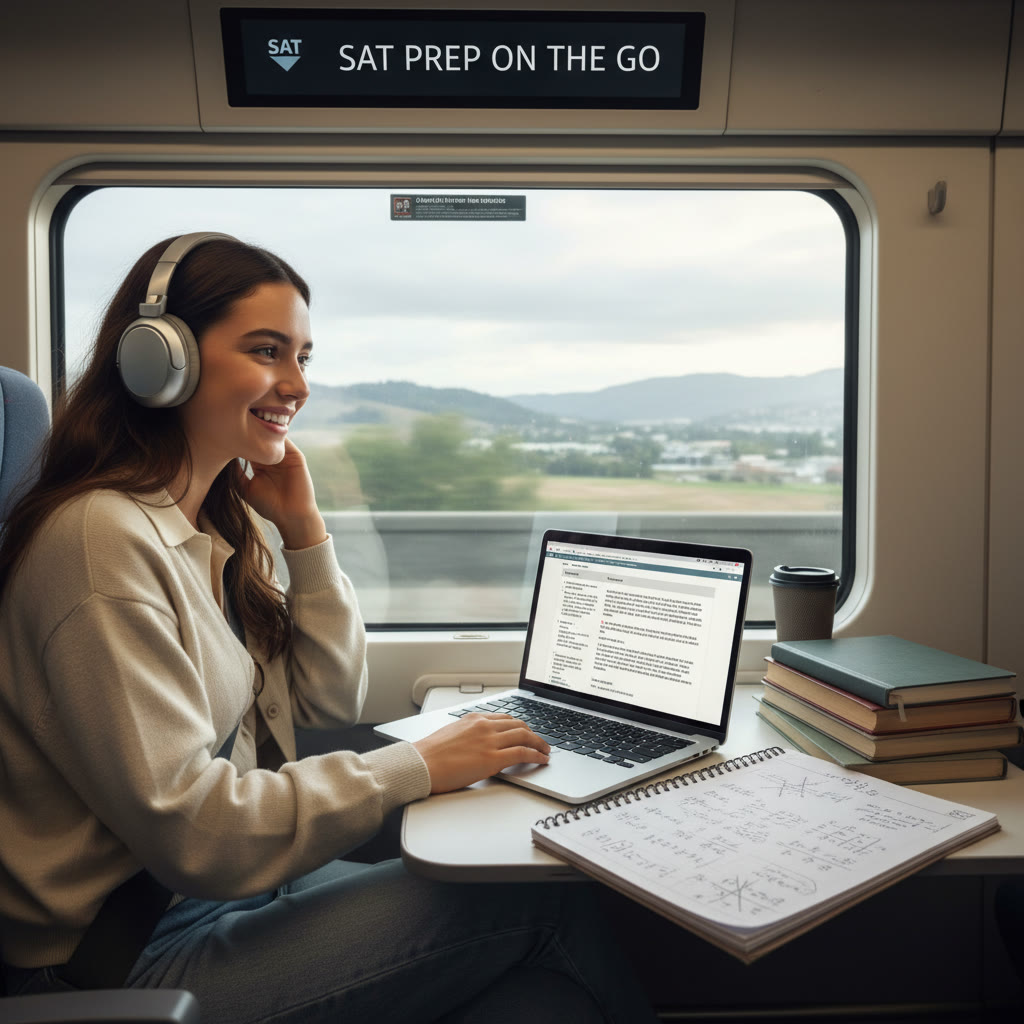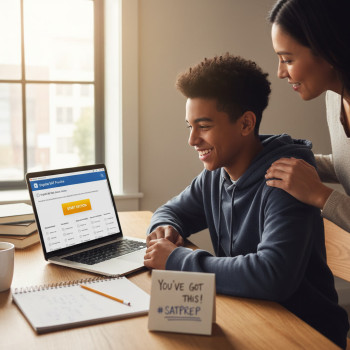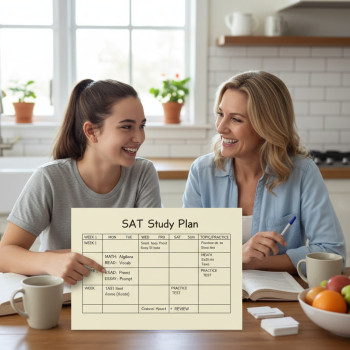Traveling? You Can Still Nail the SAT
There’s something intoxicating about new cities, airports with endless espresso choices, and the steady hum of trains. But when your calendar fills with trips and your test date creeps closer, SAT prep can feel like packing for seven different seasons at once. The good news: you don’t need a permanent desk to make steady, meaningful progress. With a few mindset shifts, reliable routines, and the right tools, travel and SAT prep can coexist—and sometimes even complement each other.
Why Travel Doesn’t Have to Break Your Momentum
Think of travel as a different kind of environment rather than an interruption. The brain learns from variety: short, focused sessions in new places can be very productive if they’re purposeful. Many students find they actually remember concepts better when study is spread into small, consistent bursts across changing contexts. The trick is to design a travel-friendly system that preserves quality, not just quantity.
Common obstacles—and the quick fixes
- Unpredictable schedules: Build a flexible study plan with micro-sessions.
- Spotty Wi-Fi: Download practice materials and use offline study tools.
- Time-zone fatigue: Anchor your study to local light and a consistent sleep strategy.
- Lost routine: Carry a compact routine you can do anywhere—10–30 minutes of targeted work.
Plan Before You Leave: Smart Prep Starts Now
Before you pack a single sweater, spend 30–60 minutes putting a travel-ready SAT plan in place. Prep is easier when it’s preventative.
- Confirm your test date and possible test centers near your travel destinations—know what alternate centers are available in case plans change.
- Download official practice tests and PDFs so you can work fully offline when necessary.
- Prepare a travel study kit (more on this later) and a short, repeatable study routine you can do anywhere.
- Communicate your travel schedule with any tutor or program (for example, Sparkl’s personalized tutoring can adapt 1-on-1 sessions to your time zones and create tailored study plans that fit travel days).
Make a realistic, travel-friendly study plan
Instead of packing a full eight-hour study day, map out weekly priorities: one or two skills to refine, one timed section to practice, and a short review of errors. This gives structure without rigidity. If you’re working with a tutor—or using Sparkl’s expert tutors who supplement with AI-driven insights—ask them to prioritize high-impact activities that fit your travel rhythm.
Daily Routines That Actually Survive Transit
Consistency beats marathon sessions you can’t sustain. Adopt micro-habits that travel well:
- 10–20 minute warm-ups: a few grammar questions, a short reading passage, or 10 mental math problems.
- One focused task per session: no multitasking. Either practice problem-solving or review missed problems from previous practice.
- Nightly 10-minute review: go over errors from the day and flag patterns to revisit later.
Sample Study Plan by Time Available
Below is a compact table you can use as a template. Pick the row that matches your usual travel-day window and follow the recommended mix of practice and review.
| Available Time per Day | Focus | Daily Tasks | Weekly Target |
|---|---|---|---|
| 15 minutes | Flash drills, vocabulary, quick grammar | 5 vocab cards, 3 grammar items, 2 mental math problems | 5–7 short practice sets; review mistakes twice |
| 30–60 minutes | One timed section or targeted skill work | 30-min reading passage + review OR 1 math section + 15-min error review | 3–5 focused sections; identify recurring error types |
| 1–2 hours | Full timed sections + deep review | 1–2 real sections under timed conditions; 30–45 min review | 4–7 sections; refine pacing and endurance |
| 3+ hours | Full practice test or paced block | Full-length test OR two full sections + analysis | 1 full test or 8–10 sections; simulate test conditions |
Study Techniques That Travel Well
Choose techniques that are portable and evidence-based. Quality practice beats passive reading.
- Active recall: Try to retrieve answers before checking them. This strengthens memory more than re-reading.
- Spaced repetition: Review tricky concepts more often in short bursts—perfect for layovers or train rides.
- Timed practice sections: Even 20-minute sections teach pacing and reduce anxiety.
- Error logs: Keep a small notebook or app to track recurring mistakes. This is gold when you review between flights.
- Audio learning: Record rules or explanations and listen during commutes or walks.
Example: A 30-minute flight study session
1) Warm up (5 min): 5 quick arithmetic or sentence-correction questions.
2) Focused work (20 min): One reading passage timed; underline key evidence in the passage and answer questions.
3) Review (5 min): Mark any wrong answers, note one strategy to apply next time.
Small, repeatable and focused—this is a template you can use dozens of times during travel.
Offline Tools and Tech Hacks
Connectivity is unpredictable. Depend on tools that can work offline and sync later.
- Download PDFs of practice tests and convert them to fillable documents or print a couple for photocopying practice under timed conditions.
- Use flashcard apps with offline mode for vocabulary and rules.
- Record short video or voice explanations of problem solutions and store them locally for review.
- Keep a small, physical notebook for an error log—sometimes pen-and-paper stick better than digital notes.

When to Take Full Practice Tests (and How to Fit Them In)
Full practice tests are your reality checks. Aim for one every 1–3 weeks as your test date approaches, and use travel windows (long layovers, a free hotel evening, a quiet weekend day) to simulate the real thing.
How to simulate test conditions while traveling
- Find a quiet hotel room or a reserved study booth in a library—silence is best.
- Turn off notifications, set strict timers for sections, and use only permitted materials (calculator for math sections, scratch paper, and a watch if needed).
- Practice full breaks too—get up and move for the exact time you’ll have on test day so your body adapts.
Logistics: Test Day When You’re Traveling
Logistics are the part you don’t want to scramble over the morning of the test. Plan ahead.
- Know what ID you need for the test center and carry it in your personal item, not checked luggage.
- Arrive early—give yourself extra cushion if you’re in an unfamiliar city.
- If you might be on the move near your test date, consider sitting the test at a location close to where you’ll be staying for at least 24 hours before the test.
- Have a backup plan for travel delays: know the policies for rescheduling and which test centers have availability if you need to switch.
Staying Healthy and Sharp on the Road
Your brain’s performance is tightly linked to sleep, food, and stress. Travel throws curveballs—counter them with simple routines.
- Prioritize sleep—use eye masks, earplugs, and short naps strategically.
- Hydrate: airplane cabins dry you out, which can zap focus.
- Move: short walks or stretching routines reset attention and reduce anxiety.
- Eat steady, protein-rich snacks before study sessions to avoid energy crashes.
Time zone strategies
If you jump multiple time zones, anchor your study to the local morning when your brain naturally aligns with new daylight. If that’s impossible, use bright light exposure and short naps to adjust quickly. When working with a tutor or with systems like Sparkl’s personalized tutoring, schedule sessions to match your optimal hours so the feedback lands when you’re most alert.
Use Downtime Wisely: Small Wins Add Up
Airport waits, taxi rides, and overnight ferry legs are study opportunities. Pack a short task list for these moments. Here are high-yield micro-activities:
- One reading passage with careful evidence marking.
- Three targeted grammar problems focused on one rule set.
- Review 10 flashcards of high-frequency vocab or math formulas.
- Analyze one mistake from your error log and write down the correction—prevents repeat errors.

Real-World Case Studies: How Students Made It Work
Example 1: Maya, the Frequent-Investor-Student. She spent 3 days a week traveling for internships. Maya used 20–30-minute evening sessions to focus on targeted weaknesses. Her tutor used Sparkl’s AI-driven insights to track error patterns and assigned two high-impact practice sections per week for her to complete on flights. Over three months she increased her reading score by 90 points because she prioritized consistent error review, not long study days.
Example 2: Jonah, the Gap-Year Traveler. He had long stretches abroad with limited Wi-Fi. Jonah prepared by downloading official practice tests and carrying a small binder of paper sections. He scheduled one full practice test every two weeks in hostel common rooms when quiet, and used short morning sessions for vocabulary. His steady cadence kept him calm and ready when he returned home to sit the real test.
Checklist: Your Travel-Friendly SAT Prep Pack
- Travel laptop or tablet with PDF practice tests saved offline.
- Printed copies of 1–2 timed sections for days with no battery or connectivity.
- Physical notecard set for vocabulary and formulas.
- Small notebook or app for an error log (sync when you have internet).
- Headphones for audio lessons and voice memos.
- Portable charger and spare pen/pencil for scratch work.
- Clear plan for test-day ID and logistics.
How Personalized Tutoring Helps When You Travel
Tutors provide structure, accountability, and targeted feedback—especially valuable when your schedule is irregular. Personalized tutoring—like Sparkl’s personalized tutoring—can be adapted to your travel life in several ways:
- 1-on-1 guidance that fits your time zones and travel windows.
- Tailored study plans that prioritize what moves your score the most, so you don’t waste limited study time.
- Expert tutors who can review errors asynchronously and give quick, actionable feedback.
- AI-driven insights that spot recurring mistakes and recommend focused exercises you can do in 15–30 minutes.
Putting It All Together: A Two-Week Travel Example
Imagine you have a two-week period with many short trips and one long weekend at home. Here’s a practical rhythm:
- Travel days: 15–30 minutes—flashcards, one reading passage, audio rule review.
- Short layovers: 30–60 minutes—timed math or reading section plus a 10-minute error log update.
- At-home weekend: 2–3 hours—one full practice test or three full sections simulated under test conditions, then a deep review session.
- Weekly check-in with your tutor or study coach: 30–45 minutes to realign priorities and get targeted feedback.
Final Tips: What Really Makes the Difference
- Focus on patterns, not isolated mistakes. If you miss the same comma rule repeatedly, that’s where your time pays off.
- Savor small wins—completing five high-quality sections is better than ten rushed ones.
- Keep an adjustable routine. Use your planner to slot in fixed sessions and fill gaps with micro-practice.
- Use tutoring strategically. Short, focused sessions with an expert—especially one who uses AI-driven insights—can propel you forward faster than extra solo hours of uncertain practice.
Wrap-Up: Confidence Is Portable
Travel changes the where and when of studying, not the how. Build a compact, flexible system: prioritize high-impact tasks, keep practice materials offline, use micro-sessions, and keep your health in check. If you want an easier path, consider 1-on-1 guidance—Sparkl’s personalized tutoring and expert tutors can help create a tailored study plan that fits your travel schedule and keeps you accountable with AI-driven insights and clear, targeted feedback.
Remember: steady, smart practice beats frantic cramming. With the right habits and a little planning, you can make progress from airport lounges to scenic trains—and walk into test day calm, prepared, and confident.
Ready to Build Your Travel-Friendly Plan?
Start by picking one travel day this week and testing a 20–30 minute routine. See what fits, tweak it, and keep the momentum. The road doesn’t have to slow you down—use it.














No Comments
Leave a comment Cancel